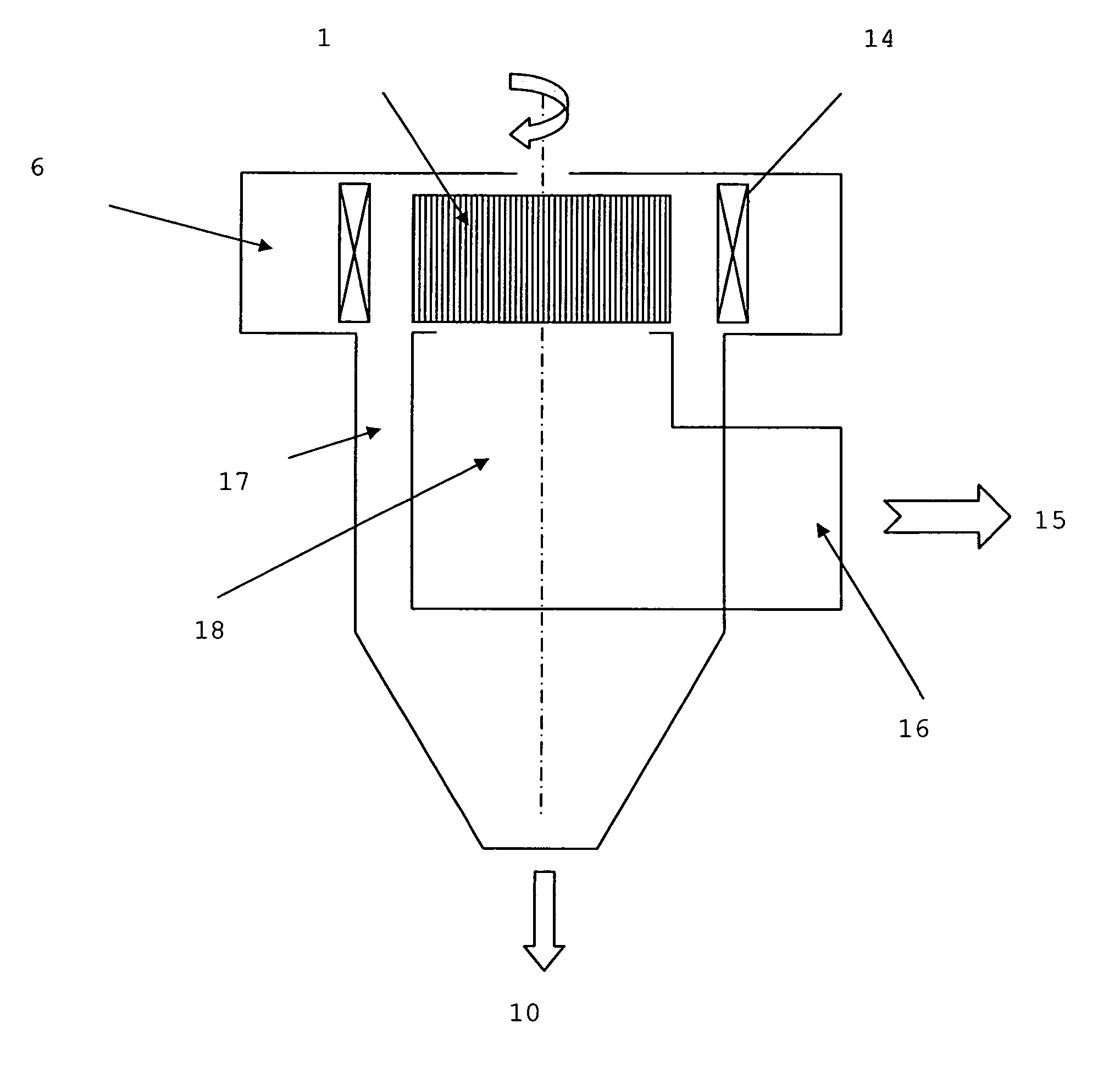Classifier for granular material
a technology of granular materials and classifiers, applied in the direction of reverse direction vortex, solid separation, sorting, etc., can solve the problems of large volume of whole installation and complex design, and achieve the effect of minimising turbulen
- Summary
- Abstract
- Description
- Claims
- Application Information
AI Technical Summary
Benefits of technology
Problems solved by technology
Method used
Image
Examples
Embodiment Construction
[0036] All types of classifier operate according to the same principle, which is shown in FIG. 1. The heart of the classifier comprises a squirrel cage 1 rotating about a vertical axis. This cage comprises spaced plates or bars and is surrounded by vanes 14 allowing to direct the air before it enters through the intake volute 6 in the cage 1. Vanes 14 may also assist with controlling the airflow.
[0037] The material to be separated enters the sorting zone defined by the outside of the cage 1 and the deflectors 4. The maximum size of the particles entering the cage with the air will be determined by the rotation velocity of the cage 1 and the volume of air with which the classifier is fed.
[0038] The larger particles remain outside the cage and are collected in the refuse chamber 17. These large particles come out of the classifier by gravity 10. The air charged with fine particles 15 comes out of the cage either through the top or laterally and it leaves the classifier by a duct. Th...
PUM
 Login to View More
Login to View More Abstract
Description
Claims
Application Information
 Login to View More
Login to View More - R&D
- Intellectual Property
- Life Sciences
- Materials
- Tech Scout
- Unparalleled Data Quality
- Higher Quality Content
- 60% Fewer Hallucinations
Browse by: Latest US Patents, China's latest patents, Technical Efficacy Thesaurus, Application Domain, Technology Topic, Popular Technical Reports.
© 2025 PatSnap. All rights reserved.Legal|Privacy policy|Modern Slavery Act Transparency Statement|Sitemap|About US| Contact US: help@patsnap.com



